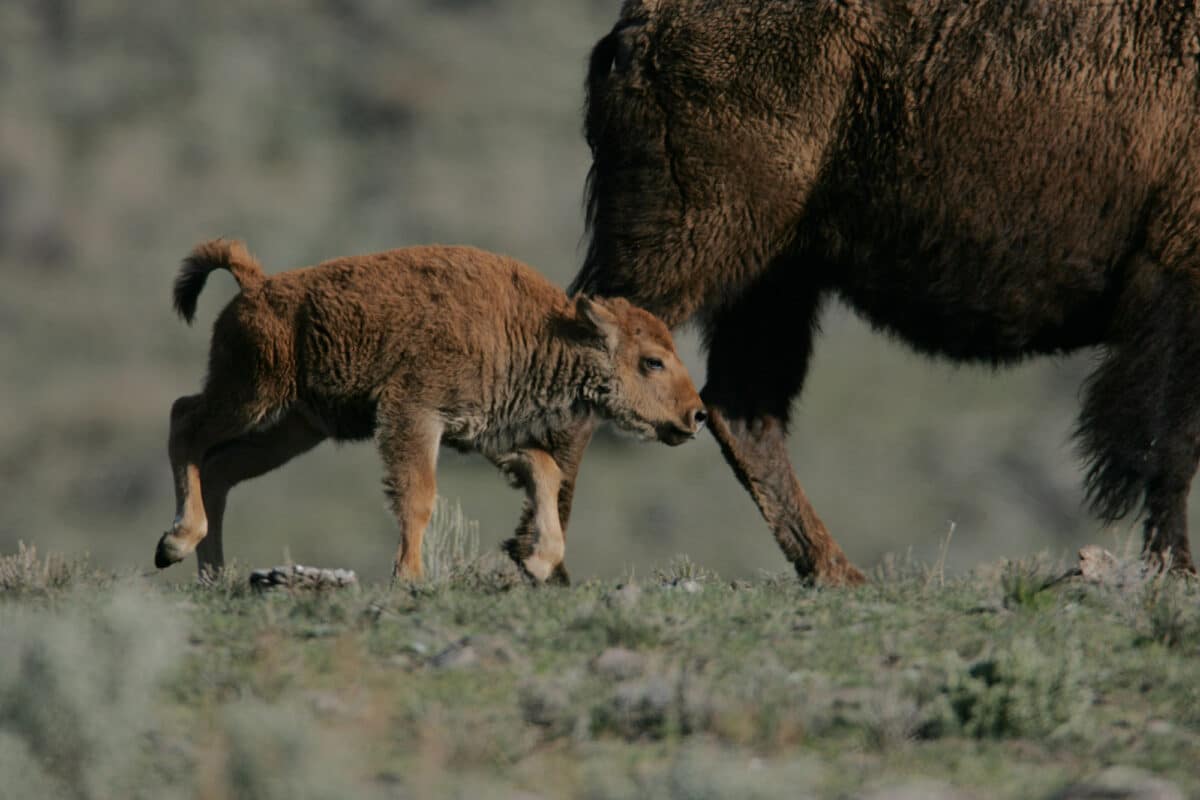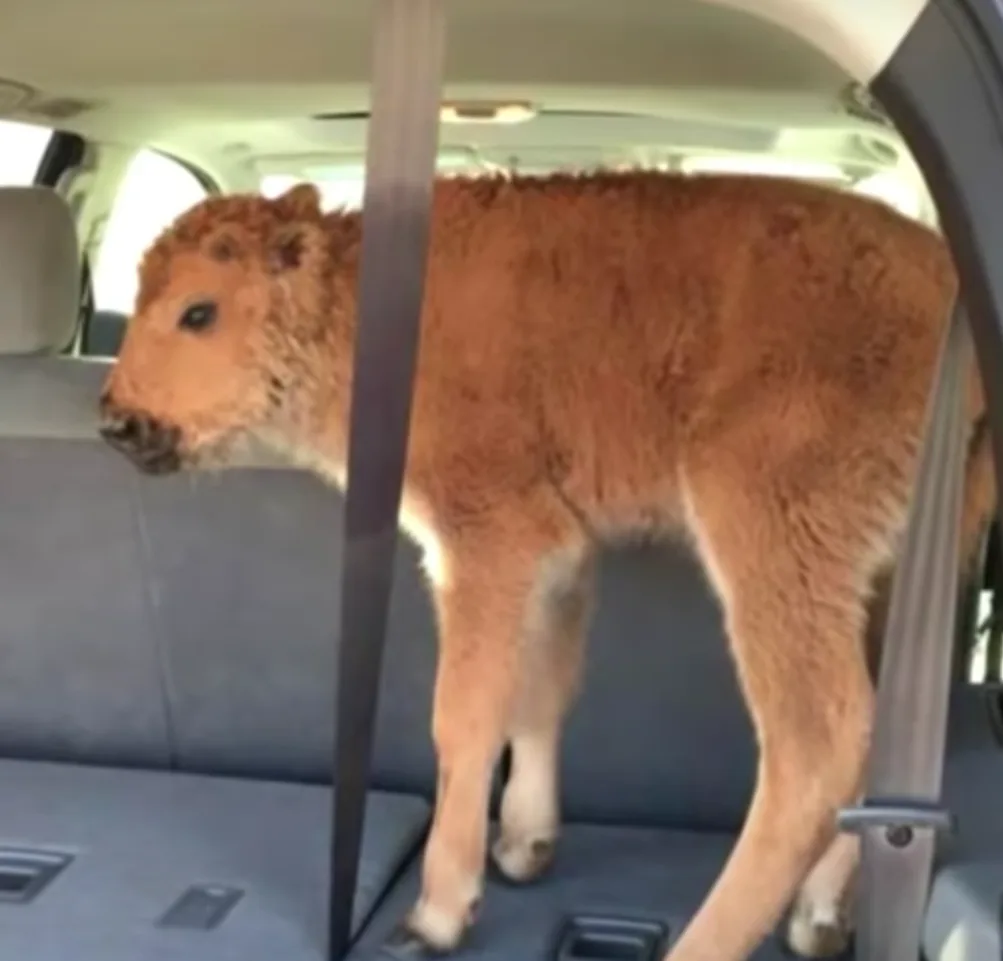In 2016, Custer State Park in South Dakota became the backdrop for a cautionary tale of human interaction with wildlife. A seemingly compassionate act by a visitor who believed she was helping a cold and distressed bison calf led to an unforgettable incident that underscored the importance of responsible wildlife encounters.

The Intervention
One spring day in 2016, a woman visiting Custer State Park came across a bison calf that appeared to be shivering and alone. Filled with concern for the young animal, she tried to “rescue” the calf by placing it inside her vehicle.
The Unintended Consequences
As news of the incident spread, park rangers were alerted and promptly located the calf. Recognizing the importance of reuniting it with its herd, they took action to return the calf to its natural habitat. However, their efforts were met with an unexpected twist: the bison herd rejected the calf.
Habituation and the Dangers of Human Contact

This rejection by the herd was a crucial turning point. It highlighted the potential dangers of human intervention in the lives of wild animals. When wild animals become accustomed to and comfortable with human presence, they may lose their natural instincts. This not only disrupts their ability to thrive in the wild but also poses risks to human safety.
Lessons Learned
National parks and wildlife areas, including Custer State Park, have strict guidelines and rules in place to ensure the safety of visitors and the conservation of wildlife. These guidelines typically include maintaining a safe distance from wildlife, refraining from feeding them, and avoiding any attempts at intervention or interaction with wild animals. The incident serves as a poignant reminder of the importance of responsible and respectful wildlife encounters.
The Impact on Conservation
Responsible wildlife interaction is not just about ensuring the safety of visitors; it is also vital for the conservation of wildlife. Encouraging wild animals to remain wild and self-sufficient is crucial for their long-term survival. Habituation to human contact can lead to a variety of negative consequences. These include increased stress levels for animals, changes in their natural behaviors, and potentially, their removal from the wild for safety reasons.
Why Was the Calf Alone?
A bison calf being alone in a wildlife setting like Custer State Park could be due to natural factors. Bison calves are often temporarily separated from their mothers, especially during or after birth. This is to reduce the risk of predator detection.
During the calving season, mothers may leave their calves in hidden locations while grazing nearby. Additionally, young bison calves are naturally curious and may wander away from the herd to explore their surroundings, all of which can make them appear to be alone while they await their mother’s return.

The ill-informed intention of rescuing a bison calf at Custer State Park in 2016 ultimately highlighted the delicate balance required when interacting with wildlife. While our compassionate instincts are admirable, it is essential to remember that wild animals are best left undisturbed in their natural habitats.
Responsible tourism and adherence to established guidelines ensure the safety of both humans and animals. This will contribute to the preservation of the natural world we all cherish. The lessons learned from this incident continue to resonate as a testament to the importance of respecting the boundaries of nature.
For more on bisons:
Woman approaches bison for a selfie in Yellowstone National Park
Watch: Bison Headbutts Car in Yellowstone National Park
- Discover: Top 12 American Animals and Wildlife - April 15, 2024
- 10 Animals That Hibernate Through the US Winter - April 12, 2024
- Watch: The Kleptomaniac Cat of Houston - April 2, 2024



Dobetter
Sunday 24th of September 2023
This article fails to mention details in the headline. It should have mentioned why they couldn't place this marvelous animal in a zoo.
Backcountry164
Friday 29th of September 2023
Probably because most people can figure that out on thier own. Just pick one of a dozen reasons. How about this, It's a herd animal. What quality of life would it have stuck all by itself in some enclosure?? You're the one being cruel, just to make yourself feel better...
Sunday 24th of September 2023
People should stop trying to get close to wild animals at these parks. Between people getting hurt by wild life and not listening to rules the animals r the ones that suffer.
Eva
Sunday 24th of September 2023
Stop killing these babies! Do they even try to see if a wild life reserve, zoo or ranch might be willing to take them.
Hp
Friday 22nd of September 2023
Should of taken it to a zoo. It was a baby.
Backcountry164
Friday 29th of September 2023
Zoo's don't take drop offs. Obviously.